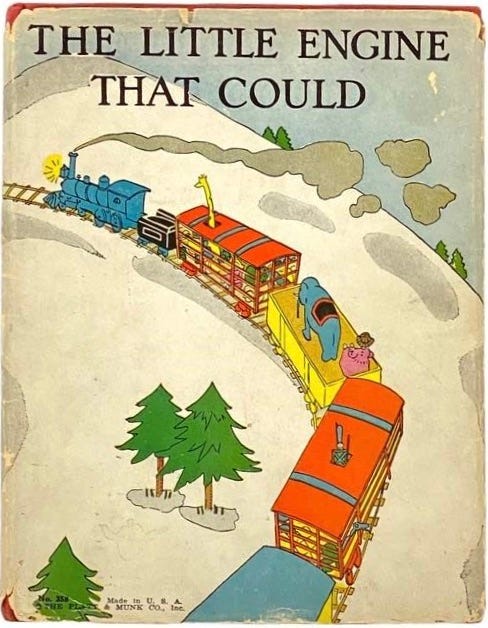Dating Rituals: 1950s: Fantasy versus Reality
“Do you know what those roller-skating parties are like?” he asked me.
“No,” I admitted.
“Everybody meets at the high school,” he said. “You ride to the roller rink in a school bus, and everyone sings songs and tells jokes and has a wonderful time. In the back of the bus, they might do a little (he made the motions of puffing on a cigarette), a little (he made his hand into a fist and made the motion of drinking from his thumb), a little (he hugged himself and twisted from side to side). … Then everybody gets onto the bus again, and you ride back to the high school. This time, if the kids on the bus take care of the bus driver, he might take the long way home.”Little Follies, “Take the Long Way Home”
Fortune Cookie Wisdom
Unrealistic Expectations: Instilling in Children
I confided to him my fears that I might make a fool of myself when I tried to skate.
“Don’t worry about it, Peter,” said Porky. “It’s like anything else: if you convince yourself you can do it, you can do it.”
“You can?” I asked. …
“The thing to do,” Porky said, “is to imagine yourself doing what you’re going to try to do. You close your eyes and picture in your mind what you’re going to do. You picture every detail, from the first moment when your wheels hit the floor to the last spectacular spin and the applause of the crowd, and then when you really start to do it, when you glide onto the floor, you’ll feel as if you’ve already done all of this before, so it won’t be such a big deal anymore. You won’t be nervous at all. I do it all the time.” …
“Say I’m bowling, and I’ve left myself a tough split. I just take a few seconds to close my eyes and imagine myself making the split. I feel the ball in my hand. In my mind, I start my approach. I can feel the whole thing—my feet sliding toward the foul line, the release—and I can see the pins standing there, the ball rolling toward them, the hook, the way that it strikes the pin just right, the pin kicking across and striking the other. Then I’m ready. A calm spreads through me the way the smell of dinner spreads through a house. I’m ready. I think I can do it, so I can do it.”Little Follies, “Take the Long Way Home”
New research coming out of Oxford and Cambridge … suggests that your ability to vividly imagine details about a bright future dramatically increases your energy and momentum, which leads, in turn, to constructive action. When our mind’s eye can picture exactly what that bright future looks like, it can orient itself in the direction of what we envision.
This is largely because the more vividly we can picture something, the more attainable it feels. Research has found that if you visualize making a shot in sports, for example, your likelihood of making it goes slightly up. More significant is that if you visualize waking up at 5 a.m. to practice, visualize working on your form, and visualize the feel of the ball in your hands right before it leaves for the basket, your likelihood of making the shot rises even more.
The Little Engine That Could is an American folktale (existing in the form of several illustrated children’s books and films) that became widely known in the United States after publication in 1930 by Platt & Munk. …
In the tale, a long train must be pulled over a high mountain after its locomotive breaks down. Larger locomotives, treated anthropomorphically, are asked to pull the train; for various reasons they refuse. The request is sent to a small engine, who agrees to try. The engine succeeds in pulling the train over the mountain while repeating the motto: “I-think-I-can.”
The story of the little engine has been told and retold many times. The underlying theme is the same—a stranded train is unable to find an engine willing to take it on over difficult terrain to its destination. Only the little engine is willing to try and, while repeating the mantra "I think I can, I think I can", overcomes a seemingly impossible task.
[more to come on Friday, January 14, 2022]
Have you missed an episode or two or several?
You can begin reading at the beginning or you can catch up by visiting the archive or consulting the index to the Topical Guide.
You can listen to the episodes on the Personal History podcast. Begin at the beginning or scroll through the episodes to find what you’ve missed.
At Apple Books you can download free eBooks of “My Mother Takes a Tumble,” “Do Clams Bite?,” “Life on the Bolotomy,” “The Static of the Spheres,” “The Fox and the Clam,” and “The Girl with the White Fur Muff,” the first six novellas in Little Follies.
You’ll find an overview of the entire work in An Introduction to The Personal History, Adventures, Experiences & Observations of Peter Leroy. It’s a pdf document.




